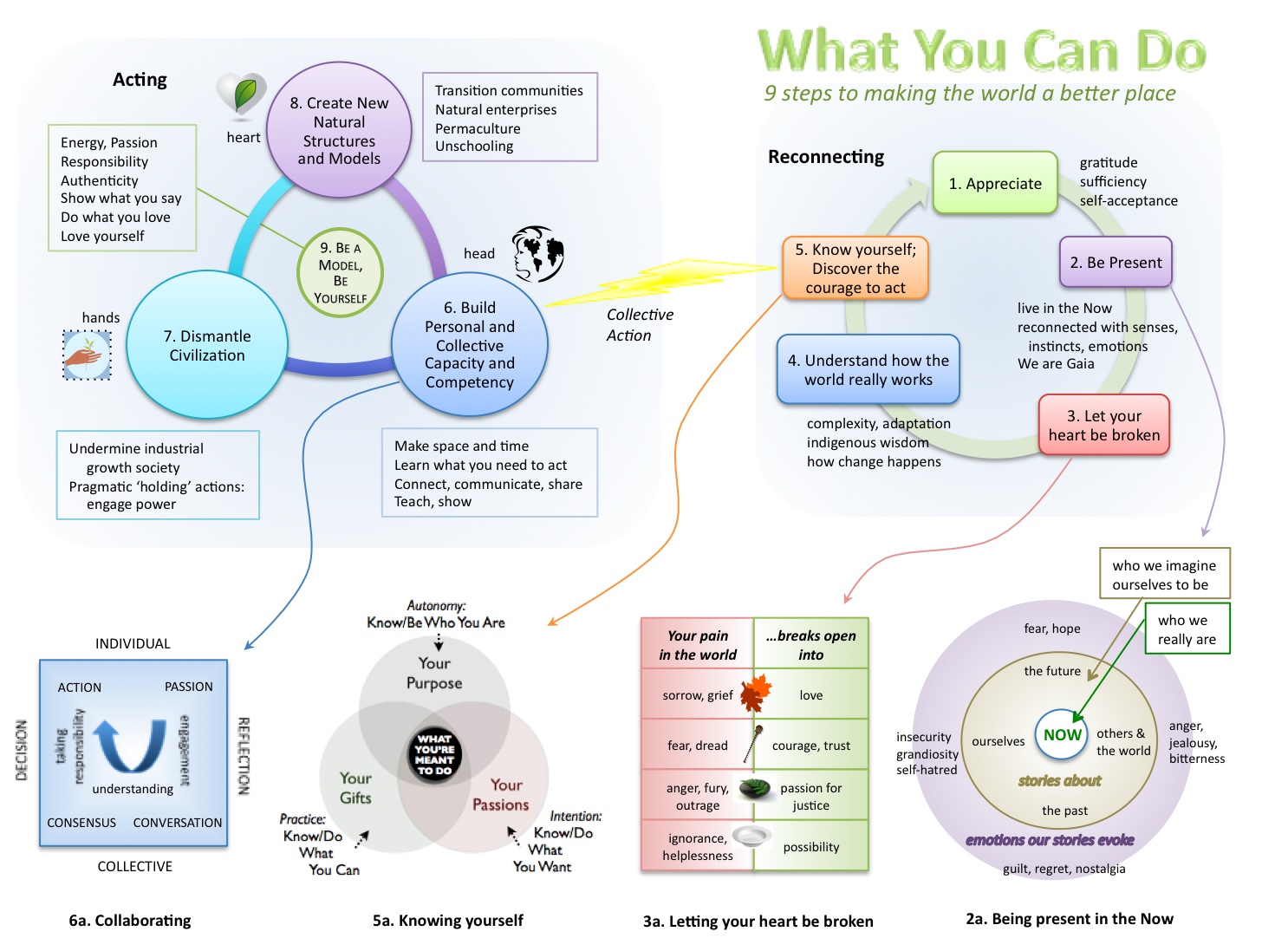
A couple of years ago I posted some mid-year and year-end “intentions”, to distinguish them from “resolutions”. Intentions are not aspirations; they are things we are in the process of doing, achieving, or becoming. They are what we’re meant to do, and who we’re meant to be. We have already begun to realize them. They are, as the word’s etymology implies, what we are “stretching towards”. I later shifted from intentions that are results-oriented (goals) to intentions that are process-oriented (practices), because I realized that all of the things that are worth doing for a lifetime are complex, and can never really be completed. There is no mastery, there is only the practice. More recently, I described the importance of aligning our long-term intentions (what we are meant to do and be for what’s left of our lives) and our short-term intentions (what we are meant to do and be right now, today, this week). Until they are aligned, we will continue to live in this unreal space, in the knowing/doing disconnect — we know we should be doing X (we are good at it, we love doing it, and it is needed in the world), but we keep on doing Y. We do Y because it is urgent, because it is easy, because it is fun, or because we don’t think we have any choice. Things are the way they are for a reason, and until we understand what that reason is, we will not be able to change it, or adapt ourselves to it. We will keep on doing Y, and X will never get done. If our long-term intentions are X-stuff, then when we identify short-term intentions that are also X-stuff, that are “stretching toward” the same place, we will see starkly the disconnect between it and the Y-stuff we’re actually doing. Something then has to shift. Either we stop doing (some of) the Y-stuff to make time and space for the X-stuff, or we acknowledge that we don’t actually intend to do X at all. We’re merely dreaming about it, or hoping it will happen magically. Recipe for unhappiness, self-dissatisfaction and a life wasted. If we were able to hear our future obituary, and it was all Y-stuff, would we see it as a life well-spent? And if not, what’s holding us back from doing the X-stuff? And if it’s lack of time or money holding us back, are we really intending to do X? Example: One of my long-term intentions is to create working models of a better way to live and make a living. I’ve written a book about how to create sustainable, responsible enterprises. I’m working on a novel/screenplay that depicts what life in a sustainable world 200 years from now might look like, to help us imagine possibilities. Right now I have James Kunstler’s book World Made by Hand sitting beside me — airplane reading as I make my way to visit my father for the Thanksgiving weekend. In this, my long-term and short-term intentions are aligned. Second example: Another of my long-term intentions is to work with others to stop the Alberta Tar Sands. I have a book, Andrew Nikiforuk’s Tar Sands sitting beside Kunstler’s, but beyond the vague idea of some kind of Open Space event, to brainstorm with others creative ways to disrupt and close down this ecological nightmare, I have no short-term intention stretching towards that longer-term one. Worse, I’m anxious about the longer-term intention: I have no passion for this kind of work (though I have great passion for helping others do it), and I know people whose lives have been devastated as a result of having been arrested, for nothing. No question this is holding me back, and that my intentions in this area, if that’s what they are, are out of alignment. This brings me back to practices. It occurs to me that, when I retire (soon), I will be best able to align and stretch toward both my short-term and long-term intentions by allocating specific time blocks to three kinds of practices every day (though I recognize I’ll have to be flexible on the times): (a) Reconnecting practices, (b) Capacity-building, activism and model-building practices, and (c) Reflecting practices. Or, put more simply, sensing (mornings), doing (afternoons) and thinking and playing (evenings). Starting with these three blocks of time, I developed the chart below that shows my long-term intentions, the long-term practices that “stretch toward” those intentions, and the short-term, daily intentions (exercises) in alignment with the longer-term ones. The long-term practices tie into the nine steps in my What You Can Do graphic above, and the colour (red, yellow, green) is from my ‘scorecard’ and shows how much work I have to do on each.
What I discovered in putting this chart together was that (a) many of the things I do today, things which take up most of my day, really don’t contribute at all to my intentions, and (b) when I reallocated time in my day to these three blocks of time (right column), it required a lot of thought, imagination and work to come up with a list of short-term intentions (exercises and projects) with which to usefully fill that time — exercises and projects that would stretch toward the long-term intentions. And even with retirement, I suspect “freeing up” six additional hours a day for intentional work will be a challenge — it will mean less time on e-mail and casual reading, for example (i.e. getting away more often from this computer). The third column of this chart is new and tentative and incomplete, but it’s also for me a personal breakthrough. I am not sure whether this is the solution, for me, to the knowing/doing disconnect and the tyranny of the urgent over the important — the real formula for Getting Things Done. But I intend it to be. With practice. Category: Getting Things Done
|




